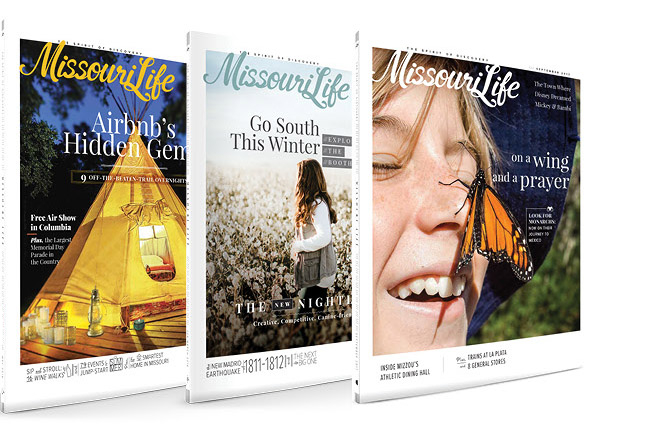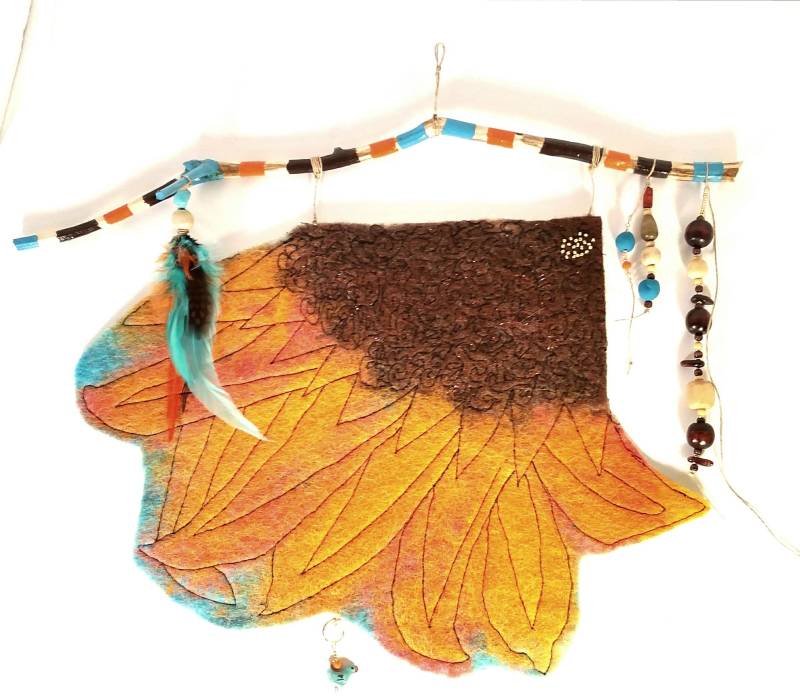St. Louis Art Museum exhibit celebrates
Missouri’s 200th year of statehood
What do a 1,000-year-old Mississippian figurine, a 1910 photo of three young boys at work and the plans for the building of the St. Louis Arch have in common?
They’re all part of a diverse exhibition offered by the Saint Louis Art Museum. “Art Along the Rivers: A Bicentennial Celebration” marks Missouri’s 200th year of statehood by bringing together more than 150 objects (including the figurine, photo and plans) from around the confluence region surrounding St. Louis.
The region encompasses the areas of Missouri and Illinois where civilizations new and old were built near the Missouri, Mississippi and Ohio rivers.
“This region played an outsized role in the history of North America as a place where major rivers, trails, rail lines and highways converged,” says Melissa Wolfe, the museum’s curator of American art. “What we want to show in ‘Art Along the Rivers’ are the complex, and sometime competing, artistic narratives that resulted from these powerful elements and the communities they attracted.”
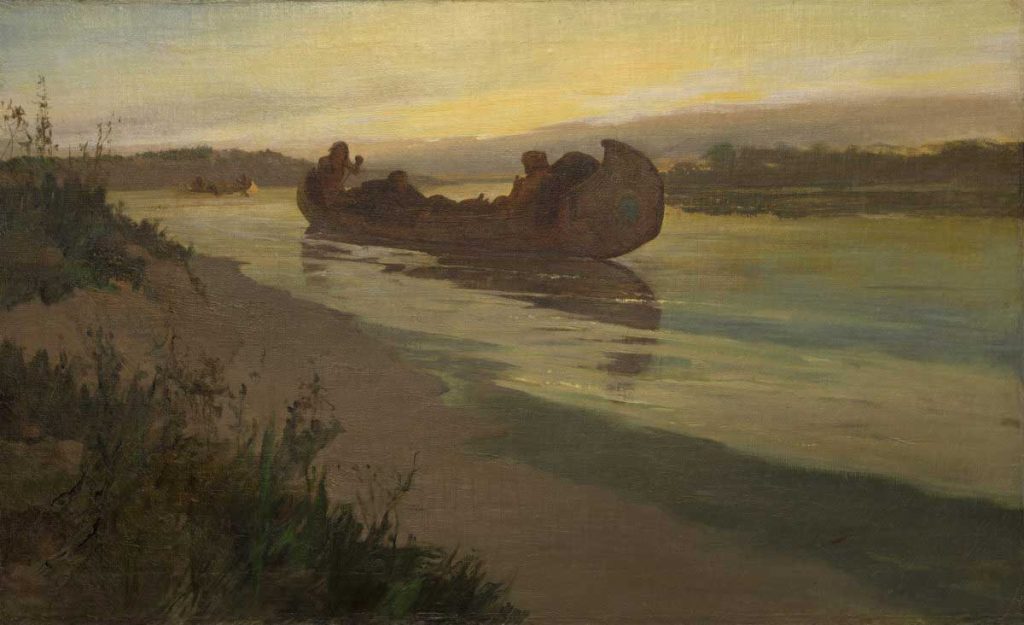
Growing up in a river town, especially during the historic flood of 1993, I’ve always been aware of the power and importance of rivers. I knew that they quickly became population centers thanks to their effects on commerce and transport, so it only figures that artists and craftsmen would follow the same patterns.
“Art Along the Rivers” does a masterful job of sharing the history of the region through the artists who lived here and the art they created. Like Missouri’s residents, landscape and weather, the exhibition features works that are greatly varied, through time, medium and viewpoint.
Barbara Carver of Miramar Beach, Florida, was in St. Louis visiting for Thanksgiving. She knew about “Art Along the Rivers” before arriving at the art museum.
“It’s a cold day, and we love visiting art museums where we travel,” Barbara says.
She previously lived in St. Louis and was interested in seeing art from a period and place where she’s lived. She said she enjoyed the diversity of the exhibition, including the wide range of mediums, subjects and forms of art.
“It caters to so many interests,” Barbara adds. “There’s something for everyone.”
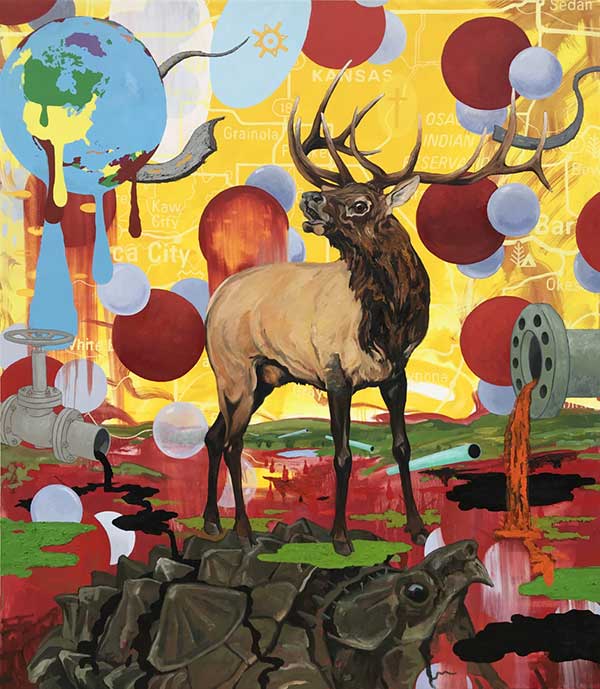
The exhibition features pieces ranging from folk art and furniture to native art, from scenes hundreds of years old to works done in the past decade. What makes it stand out is the novel way the curators have chosen to organize the items—by category.
Art at the Confluence features the work of artists drawn to the area. Art on Display shares objects you might have seen in 19th century St. Louis homes. Art in Production showcases objects made to sell. Art Communities features the works of artists who lived and worked in the region’s artistic communities. And Art as Advocate collects objects related to significant history and showcases how artists advocate for political, environmental and social viewpoints.
These categories helped me consider the deeper history and meaning to each piece and provided context for each item. Early in the gallery is a crazy quilt patched together from scraps by a formerly enslaved woman, for whom thriftiness was a necessity. Nearby is a large armoire, commissioned by Auguste Choteau for his elegant St. Louis home, then one of the largest in North America. The discrepancy in circumstance and lifestyle is hard to put into words but easy to understand through these objects.
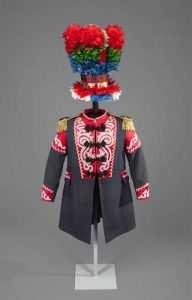
The exhibition also illustrates the ingenuity, creativity and skill of Missourians and those who have visited the region. My husband and I were dazzled by the 15-gallon Libbey punch bowl that won the Fair’s Grand Prize Medal for cut glass and transports viewers to an exciting time in St. Louis history.
I was also transported to a heart-wrenching time in history by “The Slave Auction,” a John Rogers sculpture that shows a family, with small children, about to be torn apart and sold to the highest bidders with no regard for their humanity. Rogers was inspired by time spent in Hannibal, which was his only experience living in a slave state.
We were in awe of the Statue of Liberty cabinet, an elaborate showcase of woodworking from Julius Hasenritter, who was born in Hermann. And it was hard not to spend too much time staring at “Emmylou,” a portrait by Cayce Zavaglia that looks like a painting but is actually hand embroidery. I was also fascinated by the idea of including architectural drawings, like the Arch plans.
Whether you’re looking for a deeper understanding of Missouri history, an enlightening cultural experience or just a good way to spend a cold day, check out “Art Along the Rivers.” It does have an experience for everyone.
Know before you go
- Cost: $12 for adults, $10 for seniors and students, $6 for children 6-12.
- Free for members, children 0-5 and to everyone on Fridays.
- General admission to the museum is always free.
- Open through Jan. 9
Special Bicentennial Celebration Ticket Prices
Exhibition tickets for adults will be 50 percent off on December 14, 15, and 16.
Related Posts
Missouri Plein Artist Billyo O’Donnell Shares His Art
Meet the Missouri plein air artist who translates with paint.

